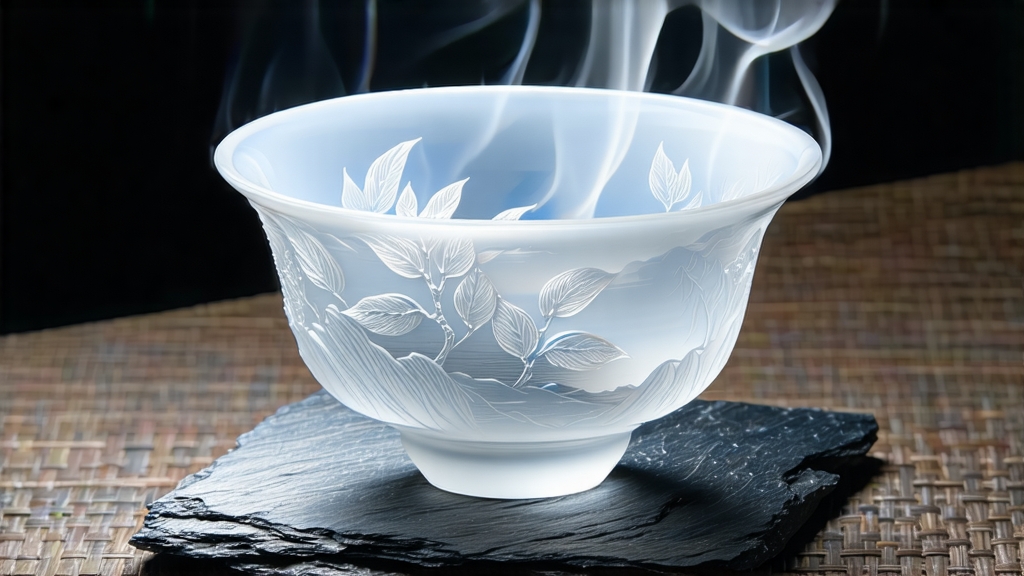
Tucked high in the subtropical mountains of Yunnan Province, where the Mekong carves silver ribbons through emerald forests, a tea is born that drinks the moon. Locals call it Yue Guang Bai—literally “Moonlight White”—a name that sounds like poetry but is rooted in the very physics of its making. Unlike the classic Fujian white teas that dominate Western catalogs, Yue Guang Bai is a renegade, a large-leaf cultivar (Camellia sinensis var. assamica) that borrows the minimalist philosophy of white tea and gives it a Yunnan soul: broad, sun-kissed leaves, midnight withering, and a finish that tastes of honeyed orchards cooled by Himalayan breezes.
Historical whispers place its commercial birth in the late 1990s, when a small team of Kunming tea engineers sought to create a white tea that could showcase Yunnan’s indigenous leaf. They were inspired by an older practice among Dai and Hani ethnic minorities: picking one-bud-one-leaf sets at dawn, then laying them on bamboo trays inside darkened stilt houses so that mountain winds, not direct sun, would coax the moisture away. The result was a leaf half-silver, half-umber, as if the moon had brushed one side while leaving the other to dream in shadow. Export samples reached Europe in 2003; German sommeliers compared the liquor to “liquid moonlight on marble,” and the name stuck.
Botanically, Yue Guang Bai is a flirtation between tree and shrub. The assamica variety can reach five meters if left unpruned, so pickers climb wooden ladders into ancient gardens where tea trees mingle with wild cinnamon and lacquer. Spring plucking begins when night temperatures drop below 15 °C, slowing oxidation enzymes and preserving higher concentrations of amino acids—especially L-theanine, which gifts the tea its signature creamy sweetness. Only the standard of “one bud, one leaf, one heart” is accepted: the tender apical bud still sheathed in silvery down, the first leaf like a folded fan, and the tiny second leaf half-open, heart-shaped.
Processing is disarmingly simple yet maddeningly precise. After picking, the leaves ride open trucks to the factory, but the journey must finish before sunrise; any exposure to strong morning light will “lock” greenness and erase the moon-kissed character. Inside a darkened barn, 5-cm-deep layers are spread on rattan racks raised one meter above the ground. Ventilation slats angle toward the southwest, capturing cool, moist drafts that descend from the mountains after dusk. For 48–72 hours the leaves rest in this lunar twilight, losing roughly 70 % of their moisture while enzymatic oxidation tiptoes along a knife-edge. Because no direct sun or artificial heat is applied, chlorophyll degrades into pheophytin, turning the upper surface a matte charcoal; the underside, protected from light, remains silvery white. The contrast is dramatic, like a lunar eclipse frozen on each leaf.
Once the stems feel brittle enough to snap without fiber strings, the tea is “soft-fired” in drum ovens for no more than six minutes at 45 °C—just enough to drop residual moisture to 8 % and fix the aromatics. There is no rolling, no sha-qing, no compression; Yue Guang Bai is white tea in its purest sense, a leaf allowed to speak its own dialect. Finished maocha is sorted by hand: buds weigh 0.08 g, first leaf 0.12 g, second leaf 0.09 g. Only batches where 60 % of leaves display the trademark half-moon color gradient are exported under the Yue Guang Bai mark.
Western vendors sometimes confuse it with “Yunnan Silver Needle,” but the two are siblings, not twins. Silver Needle here is 100 % buds, processed under gentle sun, yielding a brighter, more peppery cup. Yue Guang Bai’s inclusion of the first two leaves adds polyphenolic depth; liquor steeps a pale champagne gold, not jade, and carries aromas of honeydew, fresh hay, and a trace of white pepper that arrives fashionably late on the palate.
To brew it is to court subtlety. Start with a clear glass gaiwan (120 ml) so you can watch the leaves somersault. Weigh 4 g—about two heaping tablespoons—then rinse with 85 °